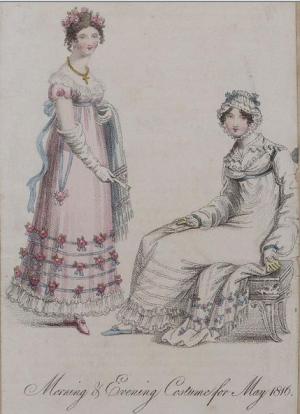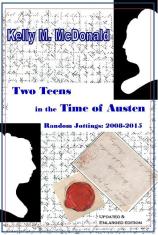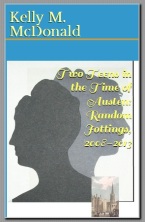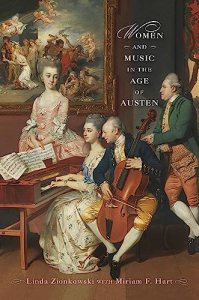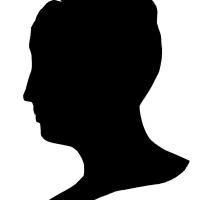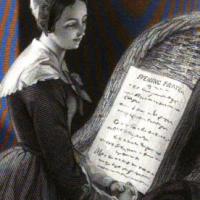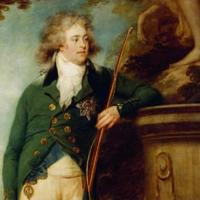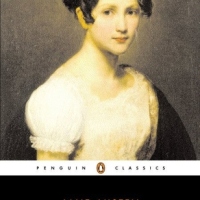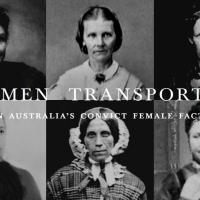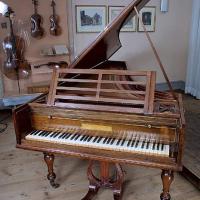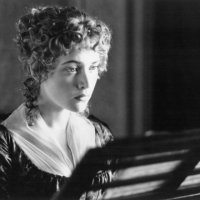Everyday Fashion in Found Photographs (book)
Do you shop in “Antique Stores” – and see (sometimes…) tons of “homeless” old photographs?
Do you see old photographs pop on the screen in your eBay searches, even when you searched for something completely different?
Old cartes des visites are TINY. I purchased one of Admiral Sir Michael Seymour (the son, 1802-1887). It measures about 2.5 by 3.75 inches (depending if the backing is included) – about the SIZE of a CREDIT CARD.
So I know what author Lisa Hodgkins has been collecting – and now she shares her collection and superior knowledge of what she sees in these mini portraits with us average readers!

Everyday Fashion in Found Photographs: American Women of the Late Nineteenth Century, is Lisa Hodgkin’s tour de force. It’s new to me so I will reserve a fuller review for later, but I am caught up in the photographs and the written text wherein Hodgkins explains how the American Civil War era affected women’s clothing, even the textiles available (or homemade, when required). I love reading descriptions of known items like “the cage crinoline,” the “Zouave jacket,” and the ubiquitous mourning jewelry. Even when the terms are new to me, the STYLES will be recognized by (if nothing else) the film Gone With the Wind, for instance.
What, you might ask, is a blog about the Regency Era in England doing “gushing” over old photographs from the era of the American Civil War (and beyond)??
“Children!” is my one-word reply.
I recently found a drawing, done circa 1880s, that I believe is Mary Gosling / Lady Smith’s younger daughter, Augusta Cure. Augusta was the wife of the Rev. Lawrence Capel Cure, long-term clergyman for Abbess Roding (appears also as Abbotts Roothing), county Essex. NOW I am obsessed with identifying the sitters in two images of young ladies by the same artist – identified as C.M. Moffatt. I believe I know WHO the sitters were. Of course, those two drawings are LONG sold.
BUT what grabs my attention even more are the photographs of the 1850s and 1860s (a few beyond those dates too) of the parents — Emma Austen Leigh’s siblings — and children (Emma’s nieces and nephews; and the in-laws that came along in those decades).
In reading Hodgkins’ text, and seeing through her eyes the small details of the skirt-shapes or “military”-inspired stripes, I am SEEING these FAMILY photographs, too, with new eyes. Not just searching their faces, but also admiring details of their clothing. Three albums exist (plus loose images), and the albums typically DATE as well as IDENTIFY their sitters. So date is not as important – plus the family sitters are known to me by birth-year, so some can be dated through the presumed age of the sitter.
I also recognized, LONG AFTER, that the Jane Seymour, represented in a plethora of photographs, was NOT the daughter of Maria and John Culme-Seymour, but the same-named niece, daughter of John’s brother William, who had emigrated to Australia. This little Jane Seymour came to her father’s homeland as a child! She lived with Dora and Arthur Currie. The link is to a blog post in which I discuss this annoying mistake. Annoying because, while it is GREAT having a photograph (a number of them), I still do not have a photograph of Jane (Culme) Seymour! The ONLY child of Emma’s siblings I can’t say “I know what she looked like”.
Also annoying is that I FOUND, in a faded photograph, Mary’s two daughters – Mimi (Mary Charlotte) and Augusta Elizabeth, in the 1850s, but – until the drawing surfaced – I wasn’t QUITE sure I knew which sister was which. Although, my gut instinct has pretty much been confirmed. The sister standing is surely Mimi, while the sister seated is the younger sister, Augusta. I blogged about this *FIND* and provide the link to that post. I updated the link to UCLA for that image, but (finally) post it below. Their image is No. 143.
As you can see, it’s faint — but it is a photograph, glued into an album, by the pioneering photographer, Alfred Capel Cure, in 1854. “Fixing” images was problematic in the early days. It is better than no image whatsoever. Now, thanks to Lisa Hodgkins, I wish I could see the clothing and jewelry with the clarity that the two faces (especially Augusta’s) that meet our gaze.
Everyday Fashion in Found Photographs: American Women of the Late Nineteenth Century is a fabulous book, the lessons of which help even someone like me with women who lived “across the pond,” and whose war was the Crimean War instead of the American Civil War. HIGHLY recommended, so matter your interests in 19th century fashion.
Isadore Albee’s Civil War Diaries
Whether Isadore Albee gets her own blog or not, I want to talk about her – and will do so here.
A very recent purchase, the Civil War diaries of Isadore Albee (her father spelled his name Allbee), is EXACTLY the project I have long sought. Past purchases have tended to forward my main research, into the Smith and Gosling family — presented online as “Two Teens in the Time of Austen” because Emma Smith married James Edward Austen (later Austen Leigh) AND Mary married Emma’s eldest brother Sir Charles Joshua Smith, baronet.
Isadore – I tend to think of her as ‘Dora‘ (which may or may NOT be what she called herself; I’m still hoping to find that out) – was a “known object” when I purchased the diaries. The seller’s ad had boasted a plethora of characterful excerpts, which caught my eye and fired my imagination. Dora wrote of her everyday life during a period, 1862 through 1871, important to American history, a period of change and national turmoil. That “era” called to me, as it does to many.
Dora is a female diarist. Typically, men‘s war diaries have been preserved for posterity, so Dora’s are a welcome breath of fresh air. Dora is young – she records her 21st birthday in May, 1862. It’s recorded as a day of “no preasants” (sic) and given over to the first effects of “scarlettina.” Dora’s typical “luck”….
The BIG inducement, compounding “female diarist” and “Civil War era” into a trifecta: Dora lived in Springfield, VERMONT. My home state!
I’d *LOVE* to direct you to a new blog. But I may simply delete what I began on WordPress. I liked the blogging platform, as it was; I despise what it is now.
I haven’t yet made up my mind if Dora will somewhat “share” space with my Two Teens or not. It’s a departure in so many ways, AND YET somewhat related – in terms of being a research project.

After fourteen years of researching English diaries and letters, finding related biographies and related artwork, visiting estates now turned into schools or cut into condominiums, there are “challenges” in working on a set of diaries from Vermont. The Smiths & Goslings were important people, wealthy people; they owned estates; they lived in London during “the season.” Traces of their faded tracks pop up in newspapers. The popular literature of their day, monthly items like Gentleman’s Magazine and the Annual Review, are go-to places for a wealth of information on their (wide) circle of English landed gentry.
For Dora‘s diaries, I’m down to a small local newspaper (not digitized) and the U.S. Census. Dora’s friends and presumed neighbors are sometimes only mentioned by first name; it’s my assumption that they are young ladies, like herself.
Mary and Emma, on the other hand, always cite people in a VERY formal manner. Young friends (and even relatives) always are designated by first and last name. Only their own immediate family members rated a first-name-only. Finding information on the many, many servants of their world has been tougher; they, too, could be first name OR last name only.
To confuse the average reader, though, those next-door neighbors were interrelated even before Mary’s marriage to Charles in 1826.
Emma, for instance, differentiates between her sister Charlotte and Mary’s sister Charlotte Gosling. Family also had two Carolines (Caroline Mary Craven Austen and Caroline Wiggett [later Caroline Workman]). In later years, there were not only Mrs. (Augusta) Smith and her eldest daughter, Augusta; but Mary had a daughter named Augusta. Emma had a daughter named Augusta. Fanny had a daughter named Augusta….
You get my drift…. A LOT of duplicate names. Even marriages brought in new but similarly-named family members. Emma’s sister Fanny changed her name from Smith to Seymour a few months before their new sister-in-law, Frances, changed her name from Seymour to Smith. To confuse things, Frances seemed to have been called ‘Pam,’ at least in her girlhood, by her family; though the Smiths always referred to her as Frances. Whereas Fanny was never known as Frances, except in a very youthful letter. Fanny’s husband, the Rev. Richard Seymour, referred to his cousin (and eventual sister-in-law) as “Dora K.” because he also had a sister Dora. Cousin Dora Knighton was the daughter of Sir William Knighton – an important personage known to the Prince of Wales / Prince Regent / King George IV. Lady Knighton’s first name was Dorothea, thus the sprouting of other ‘Doras’. Though, of course, not for my ‘Dora’ Albee.
I’ve already begun a family tree for Dora: her only brother died when a toddler, and she talks most about her elder sister, Jane, and younger sister, Sophia. I have yet to figure out if “Bessie” in 1862 is “Lizzie” in 1870, and whether both refer to her sister Elizabeth. The family tree includes eldest sister Gratia (who married in 1850 and moved to Iowa a decade or more ago) and one who married only in 1860, Ellen.
But I’m used to sorting out people. In “Two Teens,” there are THREE Emma Smiths! Besides my diarist, Emma Smith (Emma Austen), there is: “Aunt Emma” (who never married), Mrs. Smith’s youngest sister, and great aunt Emma Smith (later Lady Dunsany), a sister to grandfather Joshua Smith. Lady Dunsany married late in life, and, from what I’ve found, was as loquacious as Miss Bates (in the Jane Austen novel, Emma).
My prime interest in the Civil War diaries is Isadore Albee, herself.
Regency Costume Fashion Plates
Sabine — who’s excellent blog, Kleidungum1800, 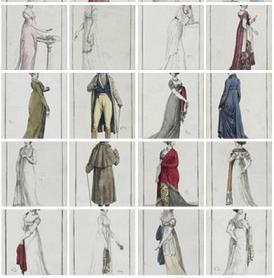 you just must check out! — has unearthed a terrific series of fashion plates on Flikr. I took a quick peep at just one – a collection of 99 photos (wow!) from 1803-1804, or, as the collection comes from the Bibliothèque des Arts Décoratifs, when dealing with those that are French plates: from the Year 12. (Dear Napoleon!)
you just must check out! — has unearthed a terrific series of fashion plates on Flikr. I took a quick peep at just one – a collection of 99 photos (wow!) from 1803-1804, or, as the collection comes from the Bibliothèque des Arts Décoratifs, when dealing with those that are French plates: from the Year 12. (Dear Napoleon!)
As you can see from the little screen shot (right), the plates include fashions for both men and women.
The page claims it’s “A Work In Progress” – and what work it all entails! Plans for the beginning uploads include fashions from 1800-1820, as well as the American Civil War period (c1855-64).
We owe a debt to user “Nuranar”. Thank you, Danke, Merci!
*
I can see the Two Elizas (Eliza Chute & Eliza Gosling) being interested in this little number,
they did so love reading the Letters of Mme de Sévigné (en français)!

*
Mary and Emma would have use for either of these beauties,
especially if the evening included one of Mrs Gosling’s balls
